Lichens seen on early morning hike.
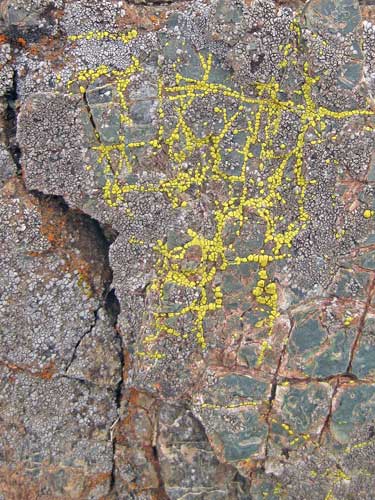
Blooming succulent with ants.
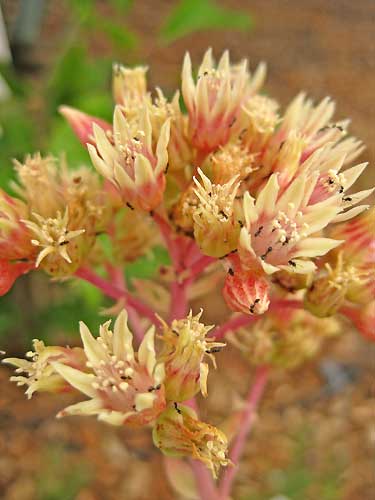
Lichens seen on early morning hike.

Blooming succulent with ants.

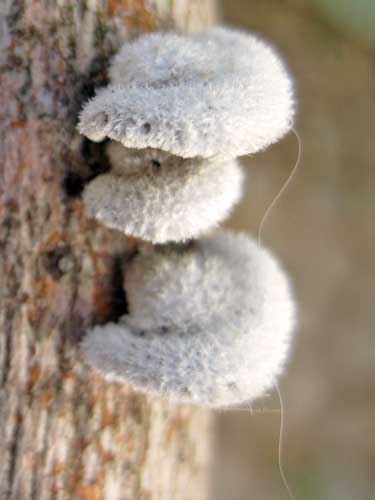
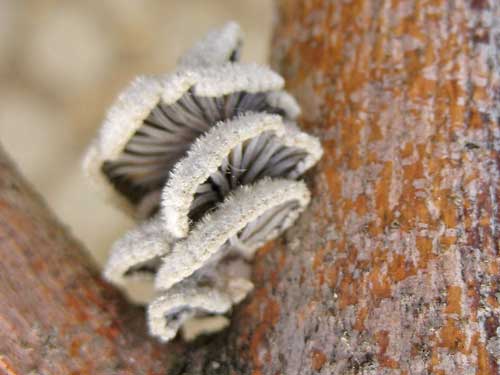
Over the weekend we attended a succulent show. There were many interesting and beautiful plants, but I went with the objective of finding out what killed my plant. And I hoped to find a suitable replacement.
Accually I do not know for sure that my plant is in fact dead. It could be one of those add water and something sprouts from the debris. And you can’t really replace a plant. You can add a new plant with similar attributes.
Just a few images of plants that I found interesting–
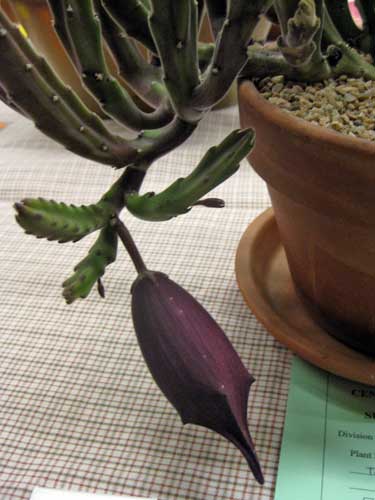
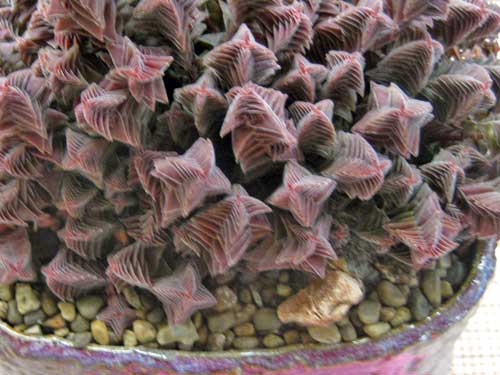

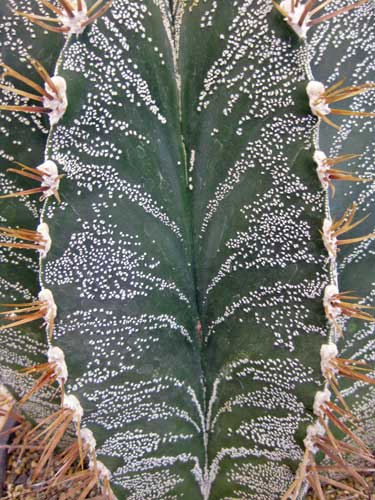
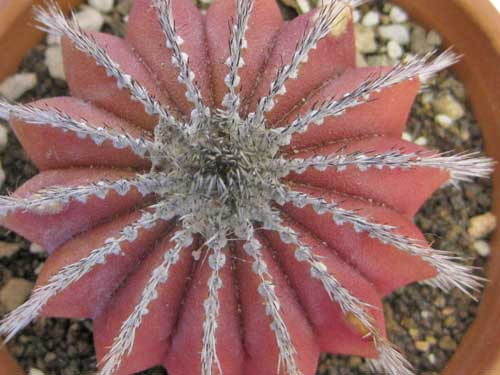
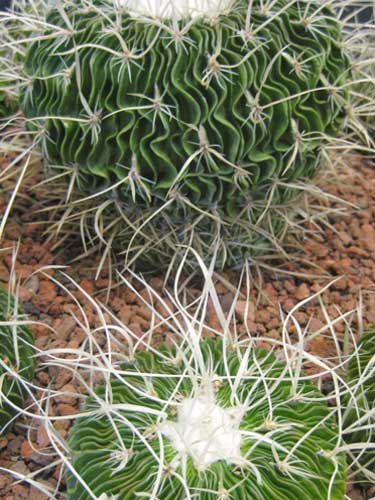
Probably dead plant–
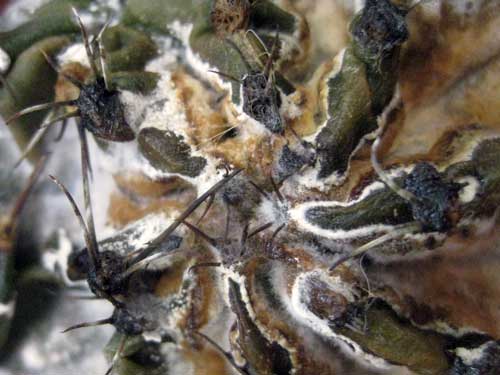
New Plant
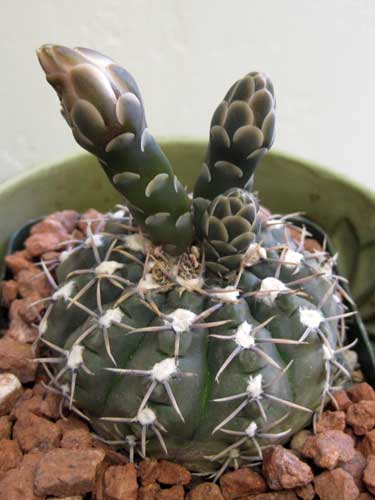
Tonight I was cleaning up the courtyard garden and found a wonderful surprise. This little fellow was on a tree that is not doing well.
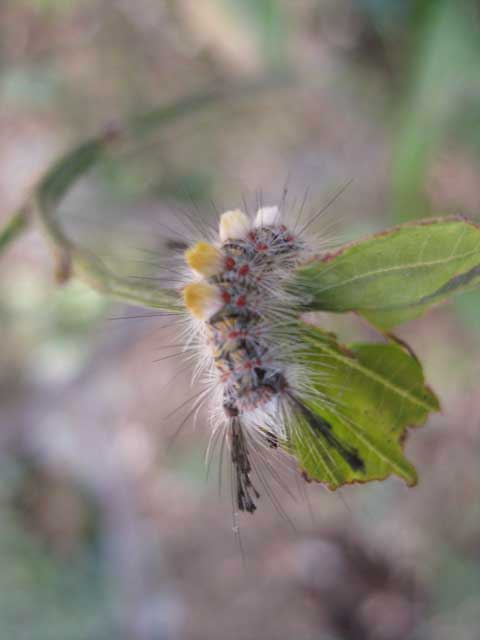
When I finished for the evening I took a quick look at the wormy guy and found that he was climbing down the tree. His movement indicated which was his head. He looks a bit prickly, but could that be an illusion? According to Debbie Hadley on the About.com site, “touch them with a bare finger and you’ll feel you’ve been pricked by fiberglass.”
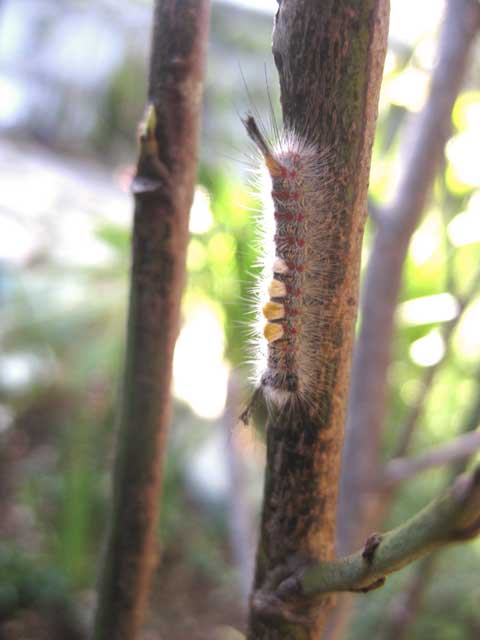
I saw a photo of the Rusty Tussock male moth and it is amazing. I hope that I have an opportunity to see one up close.
Bug Guide Image of Flightless Female
Orgyia antiqua (Rusty Tussock Moth)
My backyard garden has the most amazing fragrance in the morning. It is the combination of the fragrance of Brugmansia, Wisteria, and the blossoms of a lemon tree yet to be planted.
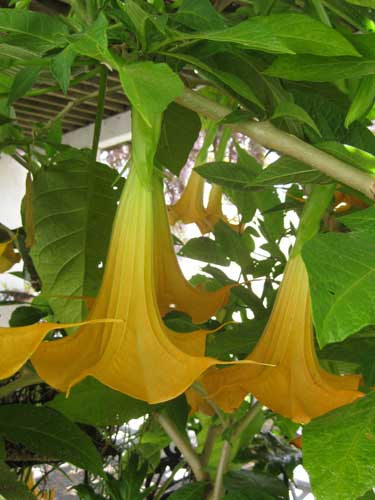

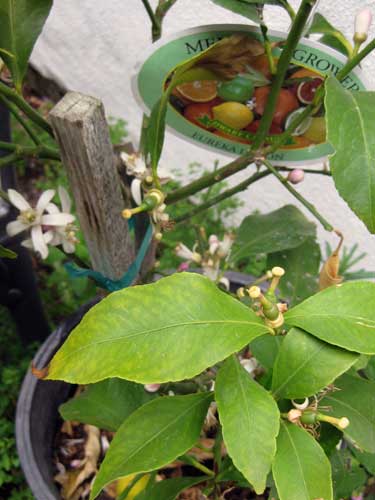
Don’t be too quick to remove weeds from your garden. This “weed” has a lovely flower that I would never have seen if I had removed it from my garden.
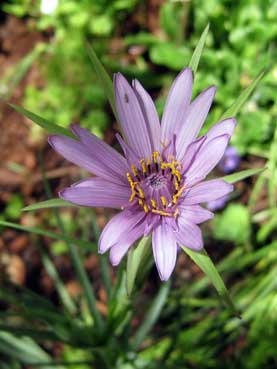
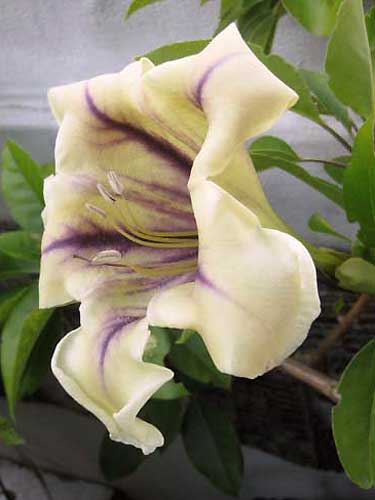
I recently snagged some Oleander pods from the parking lot of a neighborhood restaurant. In California it is common to have plantings in parking lots.
Oleander has a reputation for killing people and animals. Some stories have a valid science component, others lean toward myth and urban legend.
The pods I snagged have dried and opened exposing their lovely seeds.

Why did I snag the seed pods? I use poison plant bits in my work. Some of the bits that I use are from plants banned in a few states. The reason for the ban is reactionary. A couple of kids decide to get high, use too much, have a bad reaction, and the plant is held responsible.
Each of the cups in my Poison Cup series has a small bag of bits from poisonous plants. These are a few of the bags included in the series.
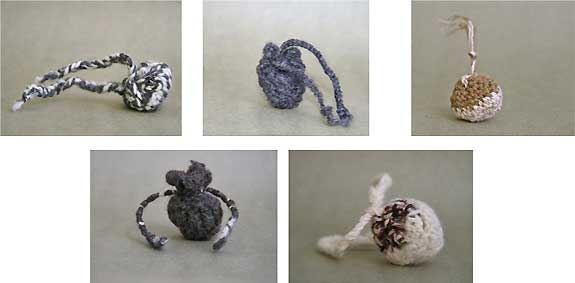
The title of the series is actually Preservation. While the cups refer to the tea ceremony and poison goblets, the cups have been perforated making them a nice vessel for seedlings.
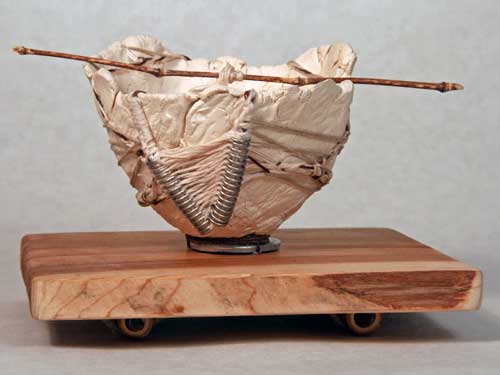
Treat with Respect contains the seed bag in the upper right corner of the above graphic.
The bag contains 11 Castor Bean seeds.
Additional image of the series can be seen on my website.
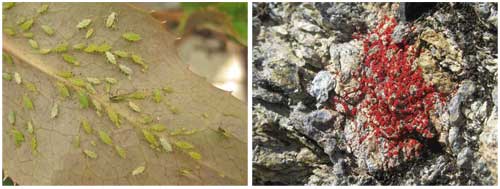
Aphids and Lichens
Yesterday I found a few of my Hellebores were covered with aphids. How does that happen? I had just purchased a bottle of peppermint castile soap and decided to give the plants a washing and a cutting.
The lichens were seen on stones in the mountains behind our house. I have taken photos of loads of lichens but never red.

Rust and Mold
A rose bush very near the Hellebores has small orange splotches. I didn’t know it was rust until I did a google search. According to the Royal Horticultural Society what I found is probably the parasitic fungus, Phragmidium tuberculatum. More cutting will be needed.
The rose bush, actually more of a vine was here when we bought the house. We keep digging it up, attempting to move it, apparently never getting it all because it keeps coming back.
The mold is growing on a container of tomato and basil hummus. The container was hidden behind a large dish of couscous.
Why did I take photos of such things? It is interesting to see surfaces transformed in a natural way. There can be beauty in things that are opportunistic and even a bit destructive. Something small can make a difference.
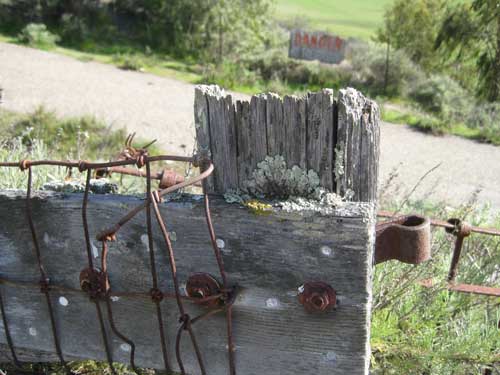
I had lovely gardens that took a lot of care. Recently I decided that I needed to spend less time in the gardens and more time in the studio. There isn’t enough time for everything. Strong plants should survive. Since I have found multiple things to damage the existing plants and trees, I suspect it is time to clear out everything potentially damaging and tend to the plants and trees that remain.
We finally did take down a tree that had been sick for quite a few years. Tried to save it because it was being grown for a source of art material. It is a sad day when a tree must be removed. Trying to think of the future and that we can use the space to grow dwarf citrus trees. I do love a good orange, but I am sure going to miss the tree.

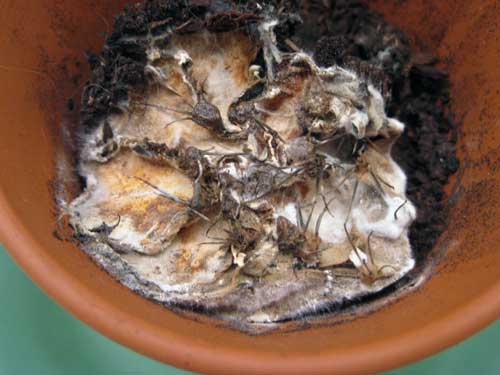
26 February 2013
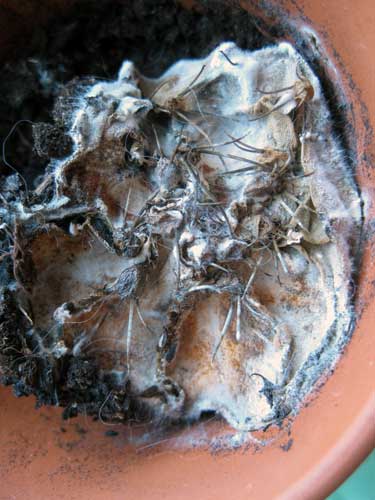
2 March 2013
There are plants that live with us for years. Their beauty brings joy and perhaps even a sense of well being.
After I get past the death aspect of the plant, I start to see the textures and color combinations.
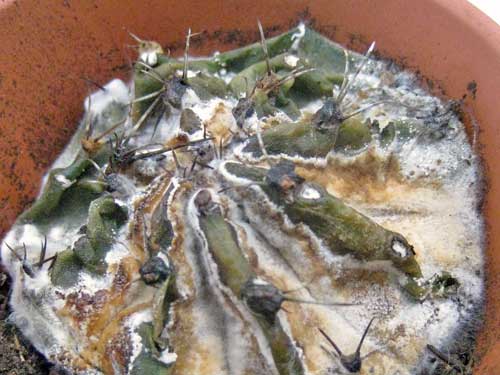
Can’t help first thinking about textured ceramic glazes.
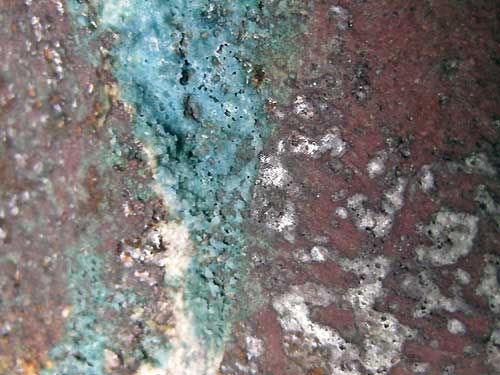
Multiple Glaze-Fired Detail
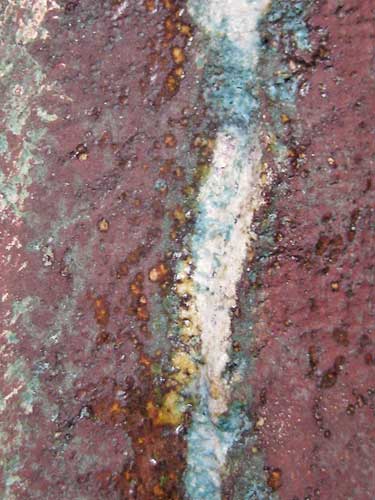
Multiple Fired Glaze-Fired Piece With Egyptian Paste.
Then how can I make a similar surface on wood and metal. I generally do not think about how to use the actual plant in my work.
There is beauty to be found in so many things, even a dying, rotting plant. And I do love sharp and pointy things that act as protection.

I did a bit of research today regarding diseases of cactus and found some information on cactus disease on The Cactus Museum site. Then to my surprise there is a cactus moth.
What is it with moths? Have they always been around and I never paid them much attention? There are moths that pollinate my Brugmansia, so some moths are good for the garden.
Texas Parks & Wildlife– Cactus Moth Poses New Invasive Species Threat to Texas Biodiversity